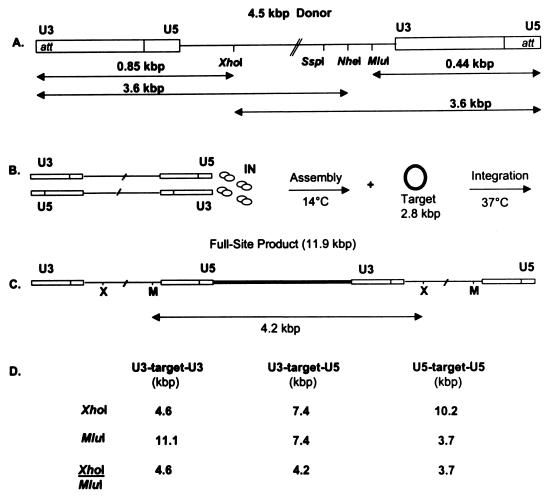FIG. 1.
Schematic of the wt 4.5-kbp donor, the assembly and integration assay protocols, the full-site integration product, and the restriction enzyme fragments of full-site integration products. (A) The linear 4.5-kbp donor containing the wt U3 and wt U5 LTR termini is displayed. The att sites are identified at each end. XhoI, SspI, NheI, and MluI sites and the length of several fragments resulting from enzyme digestions are shown. (B) Two donors are assembled by IN displayed as four dimers. After assembly at 14°C, target (boldface type is added), followed by integration. (C) The linear full-site product (11.9 kbp) is the result of the concerted integration of two separate donors (bimolecular reaction) into a 2.8-kbp circular target DNA (bold line). MluI/XhoI-digestion produces a 4.2-kbp donor-target fragment containing U3 and U5 ends. (D) Only the labeled donor-target restriction fragments resulting from full-site integration are shown. The frequency of assembling two paired ends (U3-U3, U3-U5, U5-U5) to mediate bimolecular full-site integration is defined by Hardy-Weinberg distribution frequency. For example, when both LTR ends have equivalent integration activity, the distribution of the XhoI/MluI-digested full-site fragments will be 1:2:1 (Fig. 2, lane 4).

